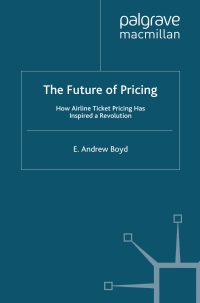Question
1. Financial Statements, Cash Flow, and Taxes: Financial Statements The focus on financial statements in finance is how managers and investors interpret and use them.
1. Financial Statements, Cash Flow, and Taxes: Financial Statements
The focus on financial statements in finance is how managers and investors interpret and use them. A firms annual report contains both verbal and quantitative information. The quantitative information consists of four financial statements: (1) Balance Sheet, (2) Income Statement, (3) Statement of Cash Flows, and (4) Statement of Stockholders' Equity.
The balance sheet shows the firm's assets and claims against those assets. In other words, assets are equal to liabilities and equity. Assets are shown in order of their -Select-balancesliquidityimportanceCorrect 1 of Item 1 and claims are listed in the order of when they must be paid. Current assets include cash and their equivalents, accounts -Select-payablereceivableaccrualCorrect 2 of Item 1, and inventory, while long-term assets are those whose useful lives exceed one year. Liabilities are divided into -Select-current assetsnotes payablecurrent liabilitiesCorrect 3 of Item 1 and long-term debt. We differentiate between total debt and total liabilities. A company's total debt includes both its short-term and long-term -Select-noninterest-bearinginterest-bearingCorrect 4 of Item 1 liabilities. Total liabilities equal -Select-current liabilitiestotal debttotal equityCorrect 5 of Item 1 plus the company's "free" liabilities. -Select-Net working capitalNet fixed assetsNet current liabilitiesCorrect 6 of Item 1 is the difference between current assets and current liabilities, while -Select-net operating current liabilitiesnet operating working capitalnet non-operating current liabilitiesCorrect 7 of Item 1 is equal to operating current assets (calculated as current assets minus excess cash) less the difference between current liabilities and notes payable. -Select-Net incomeOperating incomeNet worthCorrect 8 of Item 1 is capital supplied by common stockholders and represents ownership.
The income statement reports on operations over a period of time. Companies' operating performances can be compared by looking at each firm's EBIT, often referred to as -Select-operating incomenet incometotal incomeCorrect 9 of Item 1. A typical stockholder focuses on the bottom line of the income statement, -Select-dividends per share (DPS)earnings per share (EPS)price per shareCorrect 10 of Item 1. The income statement is tied to the -Select-cashflow statementcash budgetbalance sheetCorrect 11 of Item 1 through the retained earnings account. Net income minus -Select-depreciationinterestdividendsCorrect 12 of Item 1 paid is equal to the retained earnings for the year, and this amount is added to the cumulative retained earnings from prior years to obtain the year-end retained earnings balance.
Management's goal is to maximize the firm's intrinsic value. The value of any asset, including a share of stock, is based on the -Select-net incomecash flowsoperating incomeCorrect 13 of Item 1 the asset is expected to produce. Therefore, managers strive to maximize the -Select-operating incomenet incomecash flowsCorrect 14 of Item 1 available to investors. The statement of cash flows shows how much -Select-incomecashdebtCorrect 15 of Item 1 a firm is generating. It is divided into four parts: (1) Operating activities, (2) Investing activities, (3) Financing activities, and (4) Summary.
Changes in stockholders' equity during an accounting period are reported in the statement of stockholders' equity. Changes in stockholders' equity can come from new stock issues, stock repurchases, net income, and -Select-dividendsinterestdepreciationCorrect 16 of Item 1 paid.
Quantitative Problem: Rosnan Industries' 2019 and 2018 balance sheets and income statements are shown below.
| Balance Sheets | |||
| 2019 | 2018 | ||
| Assets | |||
| Cash and equivalents | $120 | $105 | |
| Accounts receivable | 275 | 300 | |
| Inventories | 375 | 250 | |
| Total current assets | $770 | $655 | |
| Net plant and equipment | 2,300 | 1,490 | |
| Total assets | $3,070 | $2,145 | |
| Liabilities and Equity | |||
| Accounts payable | $150 | $85 | |
| Accruals | 75 | 50 | |
| Notes payable | 170 | 95 | |
| Total current liabilities | $395 | $230 | |
| Long-term debt | 450 | 290 | |
| Common stock | 1,225 | 1,225 | |
| Retained earnings | 1,000 | 400 | |
| Total liabilities and equity | $3,070 | $2,145 | |
| Income Statements | |||
| 2019 | 2018 | ||
| Sales | $2,285 | $1,585 | |
| Operating costs excluding depreciation | 1,250 | 1,000 | |
| EBITDA | $1,035 | $585 | |
| Depreciation and amortization | 100 | 75 | |
| EBIT | $935 | $510 | |
| Interest | 63 | 46 | |
| EBT | $872 | $464 | |
| Taxes (25%) | 218 | 116 | |
| Net income | $654 | $348 | |
| Dividends paid | $54 | $48 | |
| Addition to retained earnings | $600 | $300 | |
| Shares outstanding | 100 | 100 | |
| Price | $25.00 | $22.50 | |
| WACC | 10.00% | ||
The balance in the firm's cash and equivalents account is needed for operations and is not considered "excess" cash.
What is Rosnan's 2019 net operating working capital (NOWC)?
$
What is Rosnan's 2019 net working capital (NWC)?
$
Step by Step Solution
There are 3 Steps involved in it
Step: 1

Get Instant Access to Expert-Tailored Solutions
See step-by-step solutions with expert insights and AI powered tools for academic success
Step: 2

Step: 3

Ace Your Homework with AI
Get the answers you need in no time with our AI-driven, step-by-step assistance
Get Started


